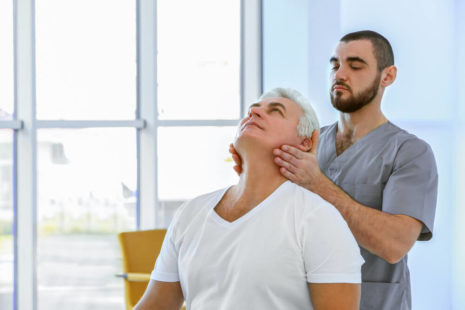Knee pain is a common complaint that affects people of all ages. It can result from a variety of causes, ranging from acute injuries to chronic conditions. Understanding the underlying reasons for knee pain is crucial for effective treatment and prevention.
Here are four common causes of knee pain…
1. Injuries
- Ligament Injuries – Injuries to the ligaments around the knee, such as the anterior cruciate ligament (ACL), medial collateral ligament (MCL), or posterior cruciate ligament (PCL), are common among athletes and can cause pain, instability, and swelling.
- Meniscal Tears – The meniscus acts as a shock absorber between your thigh and shin bones. A tear in this cartilage can occur during activities that involve twisting or turning your knee while bearing weight.
- Tendon Injuries – Overuse or strain can lead to tendinitis, which is inflammation of the tendons. Patellar tendinitis, also known as “jumper’s knee,” affects the tendon connecting your kneecap to your shinbone.
2. Mechanical Problems
- Iliotibial Band Syndrome – This occurs when the tough band of tissue that extends from the outside of your hip to the outside of your knee (iliotibial band) becomes tight or inflamed, often causing pain on the outside of the knee.
- Dislocated Kneecap – This is when the patella (kneecap) slides out of its normal position, often to the outside of the knee, causing pain and swelling.
- Loose Body – Sometimes, injury or degeneration of bone or cartilage can lead to a piece of bone or cartilage breaking off and floating in the joint space, which can interfere with knee joint movement.
3. Arthritis
- Osteoarthritis – The most common form of arthritis, osteoarthritis is a wear-and-tear condition that occurs when the cartilage in your knee deteriorates with use and age.
- Rheumatoid Arthritis – An autoimmune condition that can affect any joint in your body, including the knees. It causes painful swelling and can eventually result in joint deformity and bone erosion.
- Gout – This type of arthritis is characterized by sudden, severe attacks of pain, swelling, redness, and tenderness in the joints, often the big toe, but it can affect the knees.
4. Patellofemoral Pain Syndrome
Also known as “runner’s knee,” this syndrome is characterized by pain at the front of the knee and around the kneecap. It’s common among athletes, and young adults, especially those who participate in sports that involve a lot of running and jumping.
Preventing knee pain involves maintaining a healthy weight, staying active, and strengthening the muscles around the knee to provide better support. For those already experiencing knee pain, treatments vary based on the cause but may include rest, ice, compression, elevation (RICE protocol), physical therapy, medication, and in some cases, surgery. If you’re dealing with knee pain, it’s necessary to consult a healthcare provider for a proper diagnosis and treatment plan.




